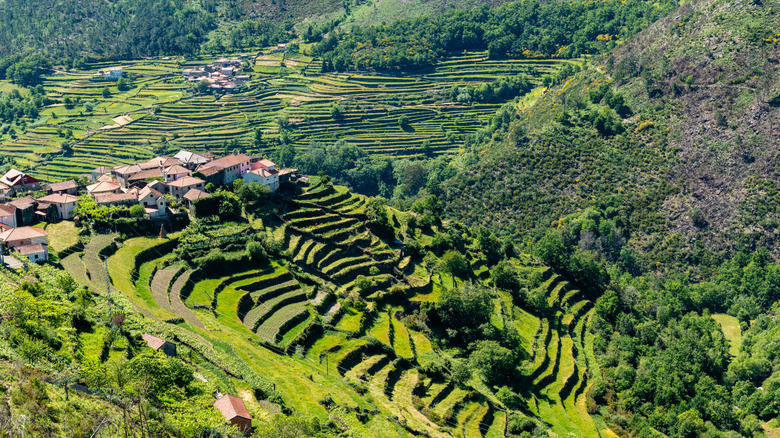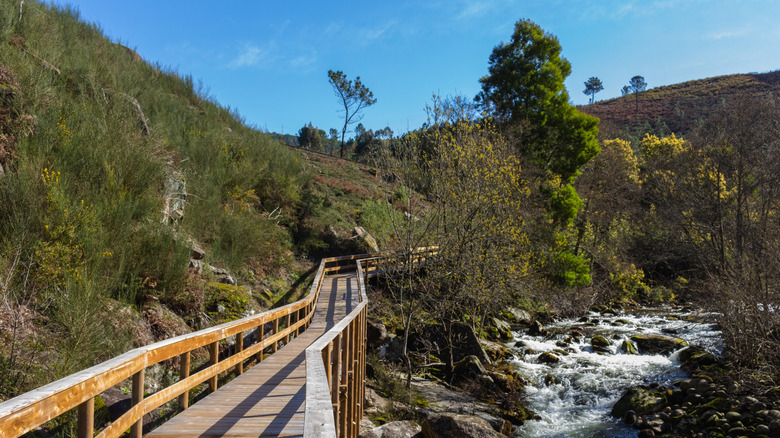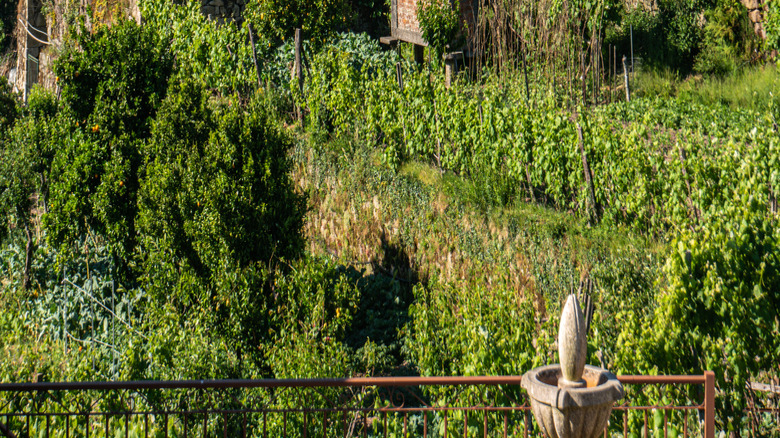This Charming Village In Portugal Offers Hiking Trails With Dazzling Mountain Views
Thinking about a dreamy vacation in Portugal fills the mind with images of beaches tucked below cliffs, historic neighborhoods, narrow streets, the iconic landmarks of Lisbon, or the wine cellars of Porto, which is also a top European foodie destination. Portugal's surfing scene is also well recognized, with wave enthusiasts flocking to towns like Ericeira, a historic gem with beautiful beaches. The small nation on the Iberian Peninsula has so much to offer travelers that it's easy to overlook a tiny mountain town like Sistelo.
Tucked away in the north of Portugal at the entrance to the Peneda-Gerês National Park, the medieval village of Sistelo is famous for its well-preserved traditional character, natural beauty, lovely hiking and walking trails, and stunning terraced hillsides. Known as "socalcos," these agricultural terraces with little stone walls create a striking scene: layer after layer of vibrant green shelves covering the hillsides around Sistelo. These unique landscapes, along with the dazzling mountain views, gave rise to the area's nickname, Little Portuguese Tibet. In addition, the cobblestone streets, medieval feel, traditional houses, and even a bridge dating back to Roman times (the Ponte de Sistelo) led to the town winning a spot on the 7 Wonders of Portugal list, in the village category. For those looking to escape the city in a place where old-school tradition harmoniously meets nature, Sistelo is the perfect Portuguese getaway.
Hiking and natural beauty around Sistelo
Once you arrive in this mountain village, it's immediately apparent why it's nicknamed the Little Portuguese Tibet. Small red-tile-roofed houses stand atop the hills, and the green terraces ripple down the slopes, creating captivating visuals. Visitors can take in these views while wandering the cobblestone streets to historic sites like the 19th-century Sistelo Castle or the aforementioned Roman bridge. The town's famous old granaries (known as espigueiros), which were built a few feet above the ground to dry cereals, are common in the village and the surrounding area. A festival held in late summer or early autumn called the Festival dos Espigueiros offers visitors the opportunity to learn more about the granaries and local agricultural practices through guided tours, demonstrations, and artisanal crafts.
The town can be explored in around an hour, leaving ample time for the nature experiences that many people who visit the town are seeking. The area boasts trails for every level of walker and hiker. Alltrails.com shows 19 routes around Sistelo, including some that wind around town, others that go up into the rugged mountains, and still others that follow the Vez River. The latter trails have the advantage of occasionally passing river beaches, allowing hikers to take dips into the clear, slow-moving water. There are also guided tours that take hikers up the forested mountainside on stone paths, passing old shepherd houses along the way, and then stopping for a picnic lunch before descending down into the river valley.
Getting the most out of a trip to this charming village
A car is pretty much essential for getting around this part of Portugal, where public transportation options are quite limited. For visitors coming from abroad, the international airport in Porto is the closest, and from there, it's around a 90-minute drive to Sistelo. Accommodations right in Sistelo are limited to a few vacation rental houses and guest houses, like the Fidalgo House or the House of Fichua. But neighboring towns like Arcos de Valdevez (a 30-minute drive away) offer a wider variety of places to stay, including moderately priced resorts and hotels. The city of Braga — a little over an hour away — would also make an excellent base for visiting Sistelo and the national park and for exploring other parts of northern Portugal.
In general, know that the weather here can be fickle here, and tourists should be mindful of the clothing they pack on a Portuguese vacation any time of year. That said, the best time to visit this region is late spring or early autumn when the weather tends to be pleasant but not too hot. July and August are a little less peaceful, as locals typically take their vacations in these months, traveling to Sistelo and nearby towns to hike and swim in the pristine river. But even if you come during the busy months, there are always ways to escape the crowds, as the town is situated at the entrance of the 270-square-mile Peneda-Gerês National Park. If you're brave enough to visit in winter, when it's often cold and rainy, you'll want to bring an umbrella and waterproof footwear. Even so, you still might end up spending time cozied up in a local restaurant with a bowl of hot soup and a glass of port.


